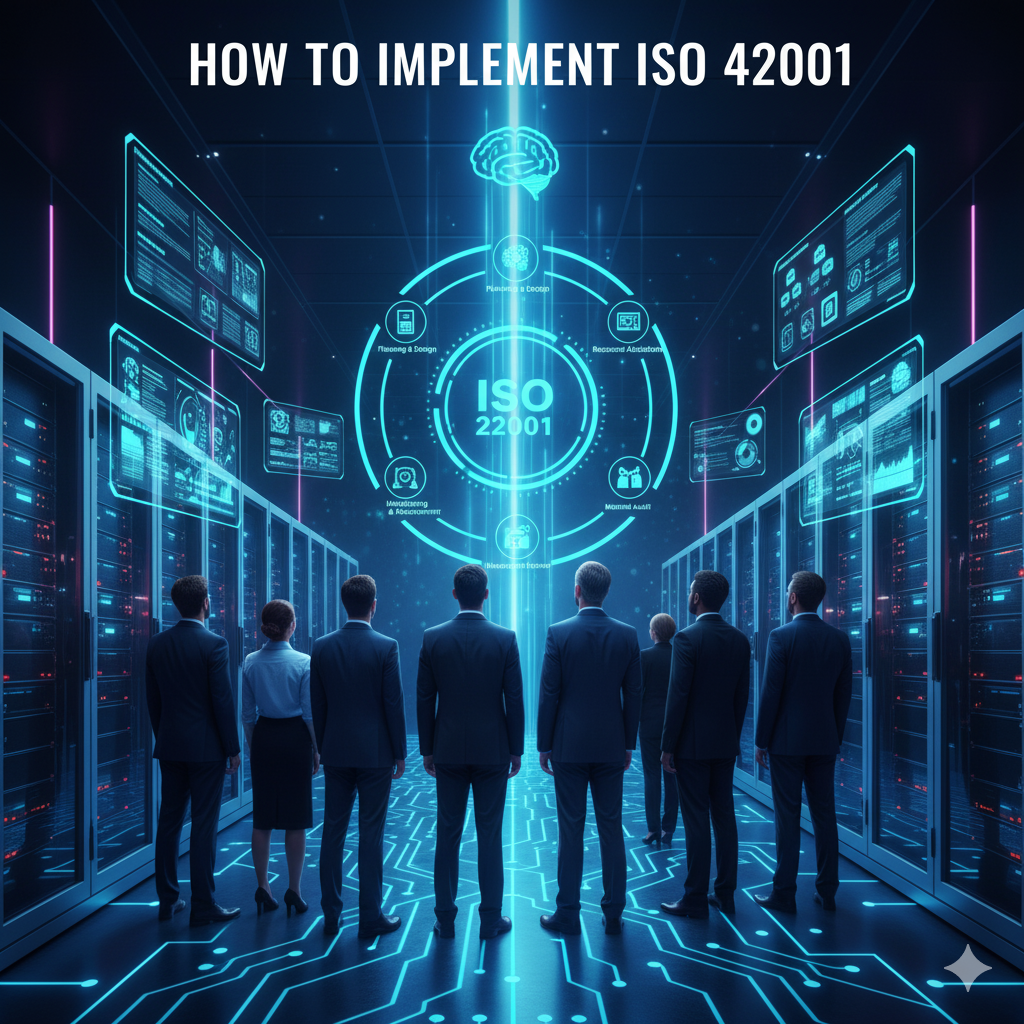ISO 42001 and the NIST AI Risk Management Framework represent two distinct approaches for organizations to govern artificial intelligence systems responsibly.
Organizations deploying AI systems face mounting pressure to demonstrate responsible governance. Two prominent frameworks have emerged to address these needs, each offering different benefits and implementation approaches. The choice between frameworks often depends on organizational goals, regulatory requirements, and available resources.
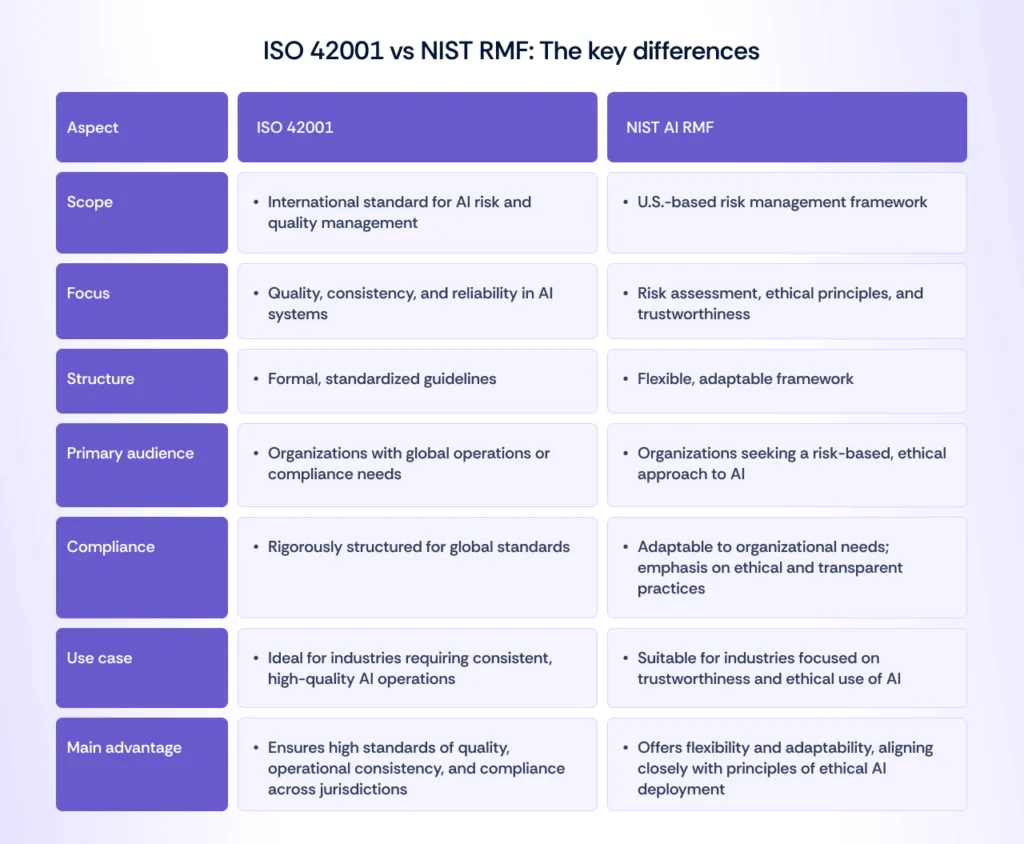
Source: Scrut Automation
What Are ISO 42001 and NIST AI RMF?
ISO/IEC 42001:2023 provides a certifiable management system standard that follows established ISO methodology. The framework enables third-party audits and formal certification, making it attractive for organizations in regulated industries. Published in December 2023, the standard addresses AI governance through structured clauses covering leadership, planning, operation, and continuous improvement.

Source: The Cyber Navigator
ISO 42001 follows the Plan-Do-Check-Act model familiar to organizations certified under other ISO standards. The standard contains ten clauses, with clauses four through ten establishing auditable requirements for certification. Organizations must demonstrate systematic approaches to context understanding, leadership commitment, planning, support, operations, performance evaluation, and continuous improvement.

Source: Holistic AI
The NIST AI Risk Management Framework takes a flexible, function-based approach to AI governance. Released in January 2023, the framework organizes risk management around four core functions that work together:
- Govern — establishes organizational policies and accountability structures
- Map — identifies AI systems and their operational contexts
- Measure — analyzes and quantifies AI risks and trustworthiness characteristics
- Manage — responds to identified risks through mitigation strategies and ongoing monitoring
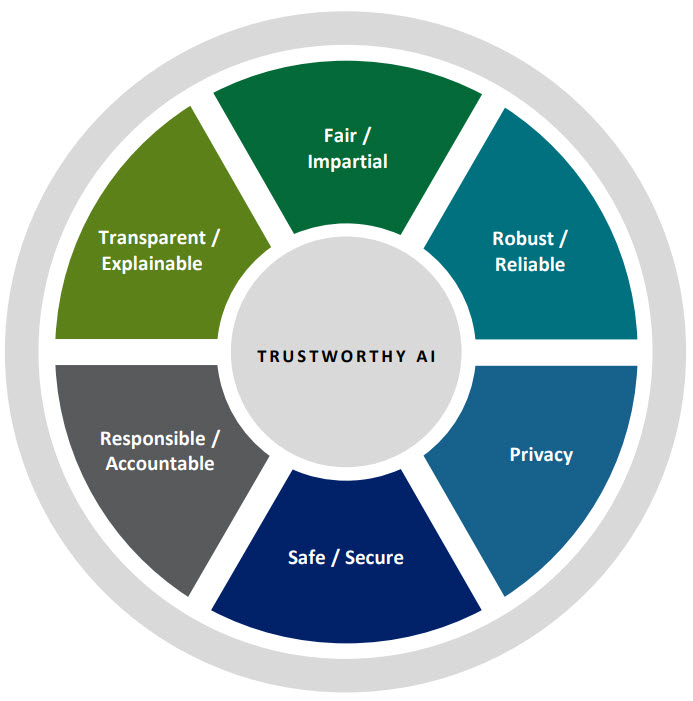
Source: AI@UCSF
NIST explicitly identifies seven characteristics of trustworthy AI: valid and reliable, safe, secure and resilient, accountable and transparent, explainable and interpretable, privacy-enhanced, and fair with harmful biases managed.
Key Differences Between the Frameworks
The frameworks differ fundamentally in structure and implementation approach. ISO 42001 uses hierarchical clauses that organizations must implement sequentially for certification. The NIST framework employs ongoing functions that organizations can implement iteratively and at different maturity levels.
ISO 42001 requires formal documentation, policies, and procedures that external auditors can verify. Organizations receive certificates demonstrating conformance with international standards. The NIST framework emphasizes flexibility over formal compliance, allowing organizations to adapt implementation to their specific contexts without certification requirements.
Risk assessment approaches vary between frameworks. ISO 42001 mandates systematic risk assessments and impact assessments for high-risk AI systems but doesn’t prescribe specific methodologies. The NIST framework guides organizations through contextual risk identification, acknowledging that identical AI systems present different risks in different operational environments.
Implementation timelines reflect these structural differences. Organizations typically complete ISO 42001 certification within three to five months, following defined phases from gap assessment through external audit. NIST implementation lacks fixed timelines, enabling organizations to advance through maturity tiers at their own pace based on resources and risk tolerance.
How to Choose the Right Framework for Your Organization
Organizations in regulated industries often prioritize ISO 42001 when compliance certification provides competitive advantage or satisfies regulatory expectations. Financial services firms, healthcare organizations, and government agencies benefit from formal certification demonstrating governance maturity to regulators and customers.
NIST AI RMF suits organizations valuing flexibility over formal certification, particularly those deploying innovative AI systems where standard governance structures might limit necessary experimentation. Technology companies, research institutions, and startups benefit from adaptable guidance enabling governance establishment without certification overhead.

Source: Scrut Automation
Budget considerations influence framework selection significantly. ISO 42001 requires substantial upfront investment for certification and ongoing costs for annual audits. NIST implementation costs vary based on chosen maturity level and internal resource allocation.
Organizational maturity levels affect framework suitability. Mature organizations with established management systems can integrate ISO 42001 efficiently into existing governance structures. Organizations lacking formal governance infrastructure may struggle with ISO requirements while benefiting from NIST’s flexible guidance for building foundational capabilities.
Implementation Process for Each Framework
ISO 42001 implementation follows established phases beginning with gap assessment against current practices. Organizations typically require one to two weeks for initial assessment, followed by three to five weeks for planning and design. Implementation phases consume six to ten weeks, with internal audits requiring approximately two weeks before external certification audits.
The certification process includes initial certification audits lasting two to three weeks, followed by annual surveillance audits covering most established controls and policies. Organizations must demonstrate conformance with all applicable clauses and justify any omitted Annex A controls based on risk analysis.
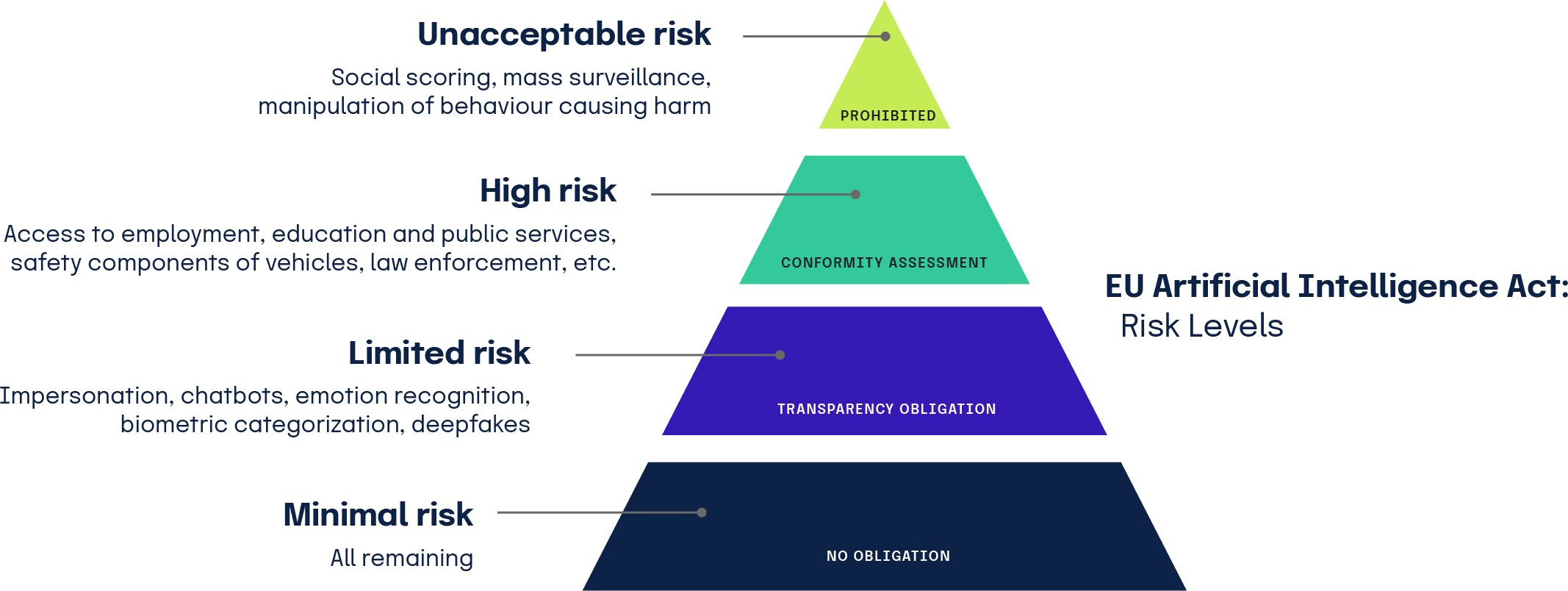
Source: Hyperproof
NIST AI RMF implementation begins with organizational assessment of current AI practices and risk management capabilities. The framework offers implementation tiers representing different maturity levels:
- Partial — basic awareness of AI risks with informal management approaches
- Risk Informed — systematic risk identification with some documented processes
- Repeatable — consistent risk management with documented procedures
- Adaptive — sophisticated risk management that evolves with changing conditions
Resource requirements for NIST implementation vary significantly based on organizational scope and chosen maturity level. Organizations may begin with minimal resource investment for basic risk identification and expand resources as implementation matures. AI upskilling strategies become crucial for teams implementing either framework effectively.
Certification and Validation Options
ISO 42001 provides formal certification through accredited third-party auditors. Organizations achieving certification receive internationally recognized certificates that auditors verify through annual surveillance audits. Certification auditors examine documented policies, risk assessments, implemented controls, and continuous improvement activities.
The NIST AI Risk Management Framework doesn’t culminate in formal certification or third-party validation. Organizations implement the framework through internal assessment and continuous improvement rather than external verification. Some organizations conduct maturity assessments to evaluate implementation progress, but these assessments lack standardized certification processes.
Without formal certification, organizations can’t externally demonstrate NIST conformance in procurement processes or regulatory contexts requiring specific compliance verification. However, NIST principles align with emerging regulatory requirements, enabling organizations to map their documented practices to multiple regulatory frameworks as needed.
Regulatory Compliance Alignment
ISO 42001 increasingly appears in regulatory guidance as an acceptable approach for AI governance, though no regulations directly mandate the standard. The EU AI Act doesn’t explicitly recognize management system standards but ISO 42001 provides structured foundations for compliance with governance mandates. Colorado’s AI Act explicitly recognizes risk management frameworks including ISO 42001 as acceptable approaches for high-risk AI systems.
Organizations implementing ISO 42001 can map governance structures, risk management processes, and documentation requirements to various regulatory obligations. The standard’s formal structure helps organizations demonstrate compliance readiness during regulatory audits or legal proceedings.
The NIST AI Risk Management Framework serves as a global reference for AI governance principles across multiple jurisdictions. International organizations and policymakers reference NIST principles when developing AI governance frameworks, recognizing that core trustworthiness characteristics address fundamental governance challenges regardless of jurisdiction.
NIST released a Generative AI Profile in July 2024 specifically addressing risks from generative AI systems, including hallucinations, data privacy breaches, and systemic bias. The framework’s adaptability enables regular updates addressing emerging technologies and risks without requiring complete framework revision.
Can You Use Both Frameworks Together?
Source: LinkedIn
Leading organizations increasingly view ISO 42001 and NIST AI RMF as complementary rather than competing frameworks. A common strategy involves using NIST AI RMF to build organizational risk management capabilities, then leveraging developed documentation and processes to support ISO 42001 certification requirements.
Sequential implementation enables organizations to benefit from NIST flexibility while building toward formal certification. Organizations beginning with NIST can implement lightweight controls rapidly, then formalize governance through ISO 42001 as AI systems become more critical to operations.
Parallel implementation allows organizations to use ISO 42001’s structure for organizational governance while employing NIST flexibility for specific risk assessment activities. Framework functions can be mapped across systems to prevent duplication:
- NIST Govern aligns with ISO 42001’s leadership and support clauses
- NIST Map corresponds to context and planning requirements
- NIST Measure aligns with performance evaluation mandates
- NIST Manage relates to operational control implementation
Building Your AI Governance Strategy
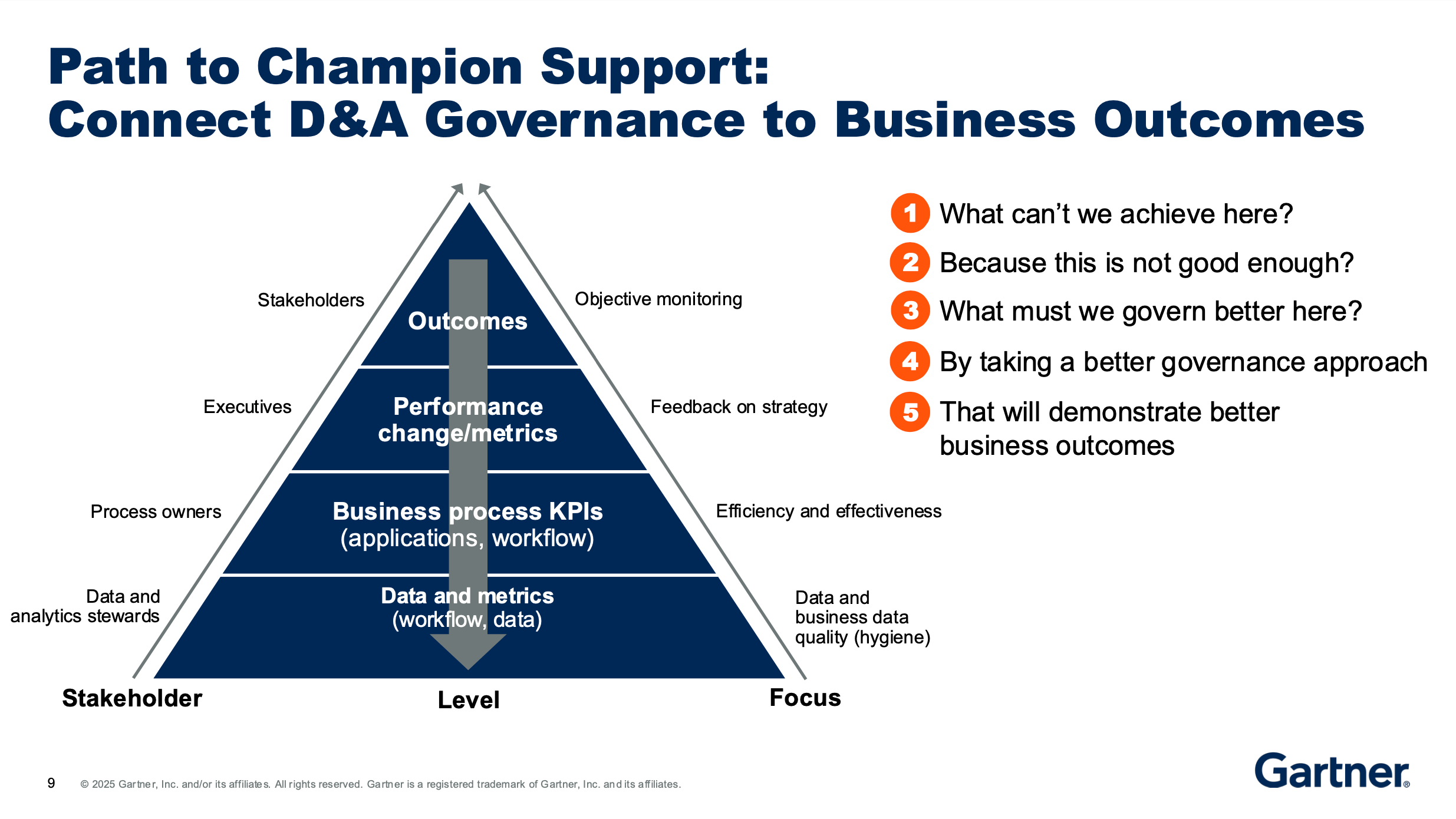
Source: Alation
Effective AI governance requires systematic risk identification across the complete AI lifecycle, from development through deployment and monitoring. Organizations must establish processes for identifying technical, operational, and social risks associated with AI systems.
Control implementation must address identified risks through technical, administrative, and operational measures. Technical controls include bias testing, performance monitoring, and security measures. Administrative controls encompass policies, training programs, and approval processes. Operational controls involve ongoing monitoring, incident response procedures, and stakeholder communication processes. Operations management becomes increasingly critical as AI systems scale across organizations.
Continuous monitoring ensures that governance practices remain effective as AI systems evolve and operate in changing contexts. Organizations must establish metrics for measuring control effectiveness and system performance. Monitoring systems detect changes in risk levels, system behavior, and operational contexts that might require governance adjustments.
Documentation requirements vary between frameworks but both emphasize maintaining evidence of governance activities. ISO 42001 requires formal documentation for audit purposes while NIST emphasizes practical documentation supporting risk management decisions.
The complementary nature of formal standards like ISO 42001 and flexible frameworks like NIST AI RMF suggests that future AI governance may increasingly rely on hybrid approaches. These combine the accountability and verification benefits of formal certification with the adaptability and responsiveness of principle-based guidance.
Organizations face complex decisions when selecting AI governance frameworks, with ISO 42001 offering formal certification benefits and NIST AI RMF providing implementation flexibility. Both frameworks address fundamental AI governance needs through different structural approaches that can complement each other in comprehensive governance strategies.



